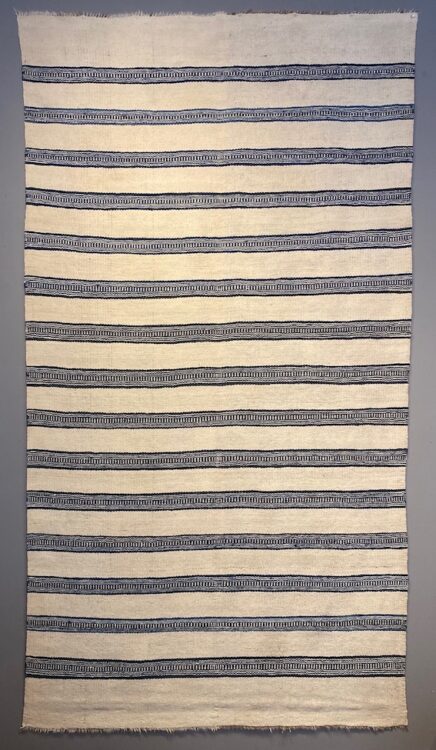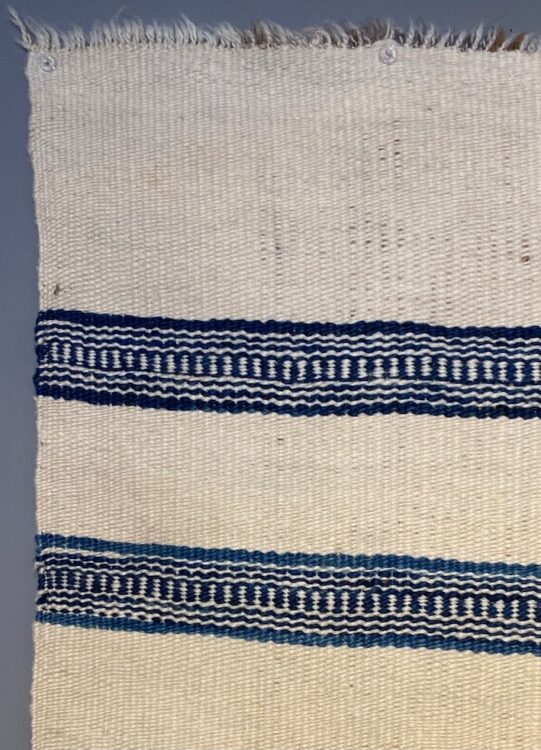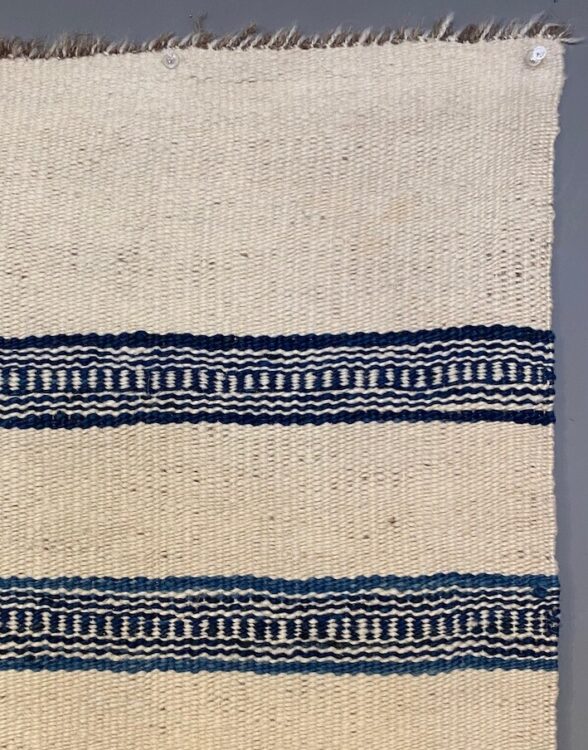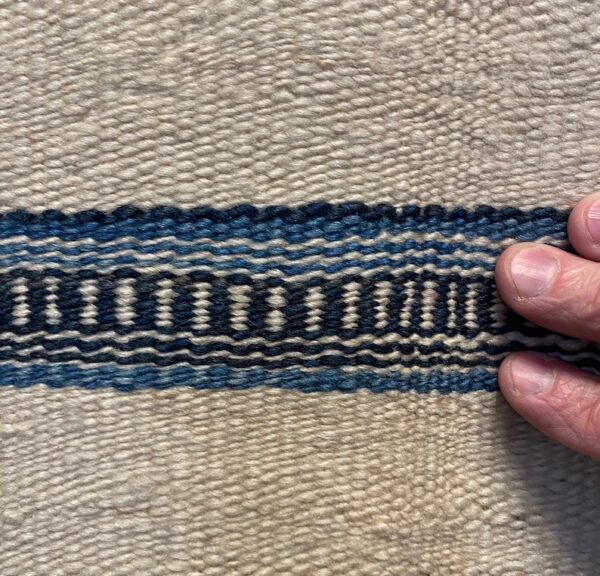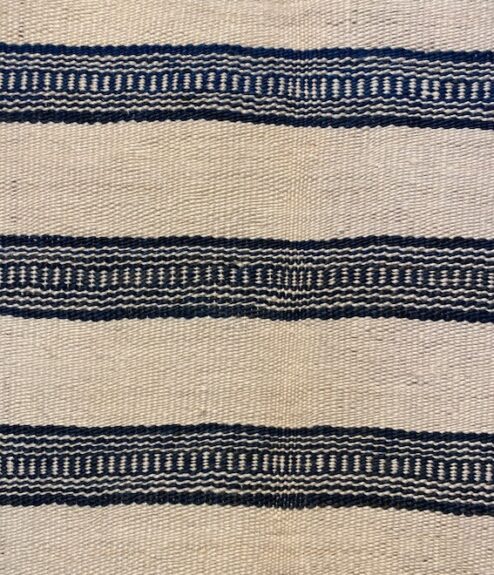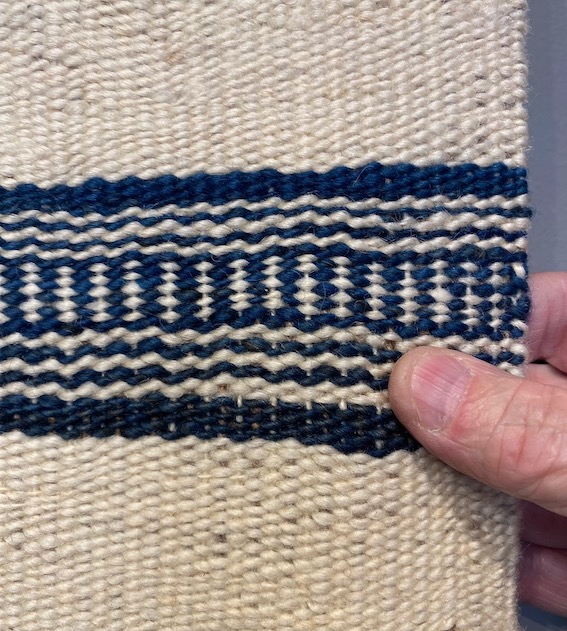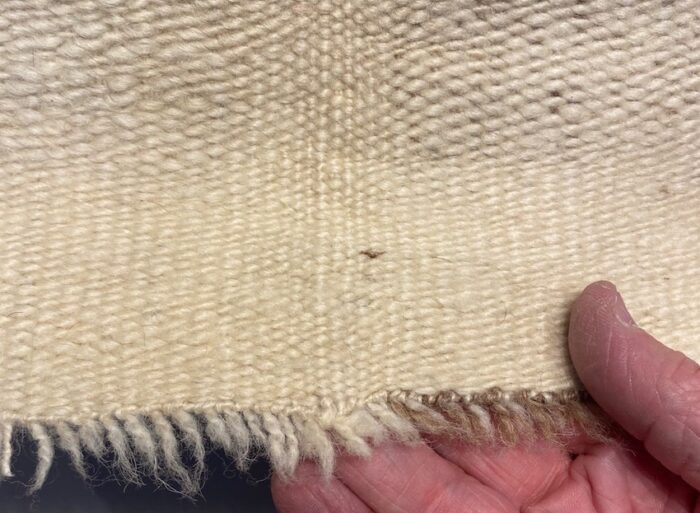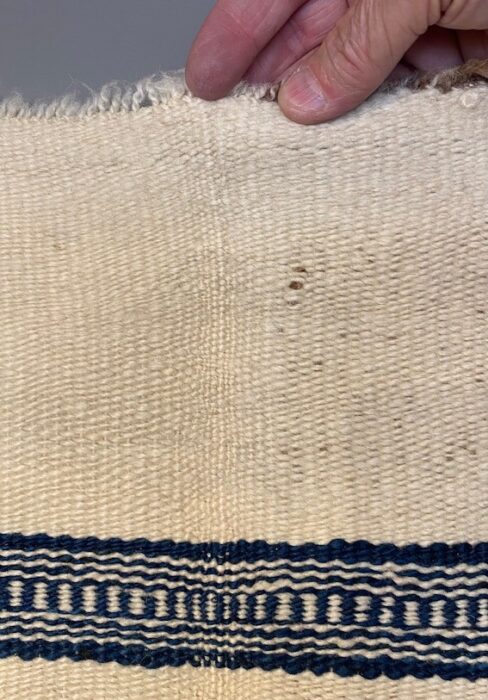An Early and Rare Rio Grande Blanket
Item: 1334
Origin: Spanish Colonial New Mexico, likely woven by a Navajo
Date: 1860 or earlier
Media: Wool
Dimensions: 87″ by 47″
Description: This Rio Grande blanket is one of the most beautiful examples I’ve had the fortune of finding. It’s early, it’s simple (and complex!) and it speaks deeply to my aesthetic in the world of exceptional blankets. The type of beading system used on this blanket is most indicative of a Navajo weaver. It is because of this that we consider this blanket woven by a Navajo on a Spanish Colonial horizontal loom.
It’s interesting to note on a finer scale the variation of design found in these indigo beaded bands. 13 0f these 15 bands are variations of mostly dark indigo mixed with lighter indigo. Only two of the remaining bands are done in a consistently lighter indigo blue. The second band from each end is done in a lighter blue. While it’s most common for blankets to have a repeating system like this, it’s highly unusual for the outer bands to vary like they do. Past examples show that the next most common type of banded system is one where the center is made different from the rest. One thought is that when this blanket is worn around the body, these two bands would show up in the front displaying this color variation. It is this unique design feature that also contributes the weaver as perhaps being Navajo, since the Spanish are more likely to adhere to a pattern and stick with it. The Euro-American man in me can’t help but to see the weaver of this blanket as a highly sophisticated individual.
It is also unusual for a Rio Grande blanket to have no brown wool in it. The only wool approaching brown would be the use of a lite tan colored wool found only in the warps. A number of the warps are a mixture of white and tan wool. The blanket is woven as one piece with grouped warps in the center. Here, a narrow horizontal loom was used with the warps doubling up underneath the top layer of warp to allow for the entire blanket to be woven as one piece. More common would be to weave two separate halves and connect the two so there is a seam down the center. Instead of a seam here, we have grouped warps – see photos 9 and 10.
The earlier date is attributed to the narrowness of the loom and the coarse placement of the warps. The earlier looms were more primitive and more narrow. The reeds on the loom, which determine the warp’s spacing, were natural material (like plant reeds) and more coarse compared to the later use of metal reeds allowing for a tighter spacing of warps. The blanket is 47 inches wide, which means the loom was roughly 24″ wide, and the warp count is 6 per inch. The wool is churro, the original wool brought over to North America by the Spaniards. The color variation of indigo exists throughout this blanket, from nearly black to a light blue. This suggests the indigo was dyed in small batches which can also suggest an earlier date. Mostly notably, the simple and original design suggests an earlier date. Put all together, one might look at a broad range from 1800 to 1860 as the window when this could have been made.
I can’t look at this blanket enough. It simultaneously satisfies and keeps me perplexed.
Condition: Condition is excellent with very minor restoration.
Price: Available on request

